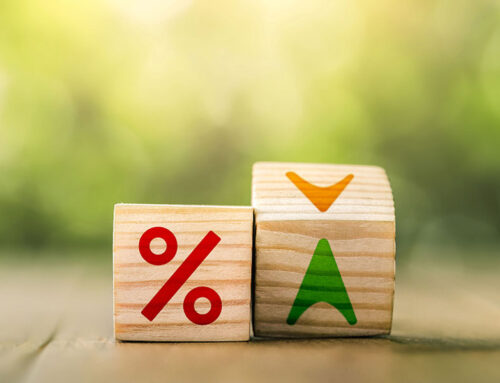Valuation is one of my favorite hobbies in real estate investing. Understanding how much a property is worth at the time of its sale is absolutely critical if you want to know whether you’re getting a good deal and if a home would be profitable to rent out.
But, for the first months of my investing career, valuation scared me. It’s something that made me face two of my biggest fears: mathematics, and losing money by making bad investments.
If that sounds exactly like you, don’t worry. I eventually figured out the valuation process, and I developed a deeper understanding of how to know if a rental property is a good investment as a result. Rentals are easier than they seem, and if you’re willing to follow along with me today, I’ll teach you the ropes for evaluating your rental investment opportunities.
Is the Market Workable?
The first thing to figure out regarding how to know if a rental property is a good investment is if you’re trying to compete in the right market. If you’re in a real estate market that’s too hot, you may not have the funds to invest in the most profitable opportunities. On the other hand, ice-cold markets might leave you desperate for a renter that is willing to pay enough to meet your target margin.
When you’re evaluating whether a given neighborhood or regional market is a right fit for the scale and pace of your business, consider the following factors:
- The price of the average property relative to your liquid capital and financing
- The ease of raising capital specifically for purchasing homes and making repairs pursuant to renting
- The availability and turnover rate of properties on the market
- The bargaining power of home buyers, home sellers, and tenants
If the market you’re examining looks like there are plenty of prospects that are in your price range (inclusive of what’s possible with your financing) which also seem to be turning over at a decent rate, there’s a very good chance that there are lucrative investment opportunities.
Of course, once you’ve chosen a workable market, you’ll still need to look at individual homes to investigate their valuation, but at least you’ll know that you’re in the right place.
How To Calculate the Valuation of a Prospect
Intuitively, you probably already understand that every piece of real estate on the market has two price tags. The first price tag is the one that you see when the property is listed for sale, which is determined by the seller. If you want to purchase a property, you’ll need to be ready to pay (roughly) whatever number is listed, because the ball isn’t in your court.
The second price tag is invisible because it denotes the actual value of the home irrespective of whatever is listed on the first tag. Unlike the first tag, the buyer is responsible for understanding the true value, because that’s how you’ll know if a rental property is a good investment.
The value that you calculate for a property is going to determine whether you should buy it or look elsewhere. So, it’s the single most important piece of due diligence that you’ll be doing when you’re trying to figure out how to know if a rental property is a good investment. And you’re going to need to do some math.
Valuation With Income Multiples
The simplest way to value a property is to examine the ratio (sometimes called the multiple) of its asking price per square foot to the average gross income per square foot at the time of sale of homes with similar characteristics in the same area.
If that sounds confusing, think of it this way.
If you buy one square foot of property for $2, and then you make $1 each year by renting it out, your gross income will be $1, so the valuation ratio will be 2:1. Now, you have a data point to use as a reference for future deals in the area in the future. For the sake of simplicity, let’s say that this one data point is a completely representative average that can be applied to the entire real estate market in the area.
Therefore, when it’s time to buy a very similar home, you have a solid reference point for how much you should be paying per square foot and therefore how to know if a rental property is a good investment.
If a square foot of land is selling for $3 in the same area, you know that there’s a good chance it is overpriced because for an average square foot you would only make $1 per year. In terms of the ratio, it’d be 3:1, which means you’d be paying more for the same amount of expected gross income at the time of sale. On the other hand, a ratio of 1:1 could be highly favorable, but in reality, nothing would ever be so cheap.
Just remember that in the real world, you’ll need a good data source to get the average gross income for rental units in an area. And, for homes that are larger than one square foot, you’ll need to remember to multiply the ratios you calculated by the square footage to get real prices for the entire property.
Factoring in Costs
Valuation with multiples is a quick and easy way to get a rough feeling for the value of a property within the context of its market. But, it isn’t the only way to know if a rental property is a good investment, because it doesn’t really take any of the peculiarities of a given home into account. Nor does it tell you how much you’ll need to spend on repairs or how much value those repairs will add in terms of a higher rental price.
To tackle these pressing questions, do the following:
- Make a list of the expected repairs and renovations for the property.
- Estimate a cost and timeline for each piece of renovation work.
- Add the costs together, then add the sum to the asking price of the property.
- Add the expected financing costs and all other costs to the adjusted purchasing cost to get the breakeven point, which is also the point at which your net income would be $0 if you sold the home after renovations instead of renting it.
- Calculate all of the maintenance, financing, and other costs per square foot per year.
- Calculate the gross income multiple per square foot for similar freshly renovated properties in the area.
Now, it’s time for the final shebang. Take your breakeven price per square foot and compare it with the area’s average sale price per square foot for newly renovated homes to get an estimated sales price. Do the same with the total expected yearly costs and the average gross income.
If your prospect’s breakeven point that you calculated is lower than the area’s average sales price and your total annual costs per square foot are significantly lower than the average annual gross income for comparable homes, there’s a good chance that you’re looking at a great investment.
Finally, subtract your total annual costs from the average annual gross income to get a feeling for the size of your yearly profit.
Streamlining the Evaluation Process
You should be familiar with valuation, but you should also know how to use software tools to double-check your work. For real estate investors who choose to become HomeVestors® franchisees, the powerful ValueChek® app is exactly the right system.
Whereas you might struggle to find the right data on pricing and compute the correct metrics and averages while working on your own, with ValueChek, you have the advantage of years of stored information as well as shortcuts for the analyses you will need to make. And, while I’ve only taught you valuation using multiples today, ValueChek™has a handful of other valuation methods that are more sophisticated. So, you’ll have an easier time pinning down the right selling price after renovations, not to mention the right purchasing price.
In short, HomeVestors® will help you answer the question of how to know if a rental property is a good investment. Even if you’re not ready to do real estate valuations yourself, HomeVestors® and ValueChek™are valuable resources to help you learn the process.
If you’re ready to take the next step, request information about becoming a franchisee today.
Each franchise office is independently owned and operated.
Contact
"*" indicates required fields






